I couldn’t tell if the bells were getting louder
The songs they ring, I finally recognize
— Second Coming | Alice Cooper | 1971
Topping a gently cresting hill, I slow my pace, crane my neck and look up at the gold-domed Colorado Capitol shimmering in the July sun.
It’s 1997.
Two years ago, I graduated from art school with a graphic design degree and moved out of my family’s row house on Knorr Street in Northeast Philadelphia’s Mayfair neighborhood. That same summer, both of my brothers left, too; the younger to college upstate, and the older to a condo in New Jersey. The Irish matriarchal power trio of my mother, grandmother and aunt Meem went from raising three young men to sitting on an empty nest, essentially overnight.
Portfolios in hand, my classmates and I competed for a smattering of local graphic design jobs. Philadelphia Magazine, the partnership of two instructors, a place in New Jersey that designs packaging for superhero toys. A medical textbook publisher.
On my way to meet a new friend at an old bar, I cut kittycorner through a park next to the Capitol. From out of nowhere, like a mugger who has me dead to rights, something both familiar and foreign blocks my path.
Midway through my senior year, I borrow a wood burner from a grad student. We talk about our post-graduation plans. George, having known me for an entire 45 seconds, invites me to Colorado. He and his wife are moving back to Denver, where they both earned their first degrees. George knows some agency owners who’ll look at my book, and we’ll stay with friends of his. I’m in.
I haven’t been on a plane. I haven’t been farther west than Harrisburg. In March of 1995, we fly into Denver International Airport (DIA) during its first week in operation, hop in a rental and drive south to Colorado Springs. I assumed the Denver Airport was in Denver and that Denver exists. But I see no evidence, only darkness. A dark like I have never seen. It stretches for nearly all of the hour-long drive. DIA was an aspirational public works project. When it opened, there was a perfectly good airport in town, while the new one was so remote that rental car companies had to change their policies because the nearest gas station was too far away to return your car with a full tank.
We exit the highway and pull into downtown Colorado Springs. It seems to exist. There are buildings and cars and statues of guys on horses. We pay a quick visit to a colleague of George’s who has stayed late at his office to meet us. I show him my work. Three months later, he calls with a job offer. I buy a one-way ticket to Colorado Springs. Five months later, they fire me. I get another job. I meet someone. Things bounce along for a solid year. I buy a car. Then, all within a matter of weeks, the relationship ends, my lease is up, and I’m fired from my second job.
As happenstance happens, George and Caren are having a condo built in Denver’s Capitol Hill neighborhood and taking a European vacation at the same time. They need a house sitter to let in the contractors, and I need a change of scenery. After slightly overstaying my welcome, I find a cheap month-to-month apartment.
1997 will be my freelance year. Long before the gig economy, freelancing is a perfectly legit career path for designers. But for me, it’s a lot of drinking, a lot of sleeping late, a little bit of working and the better part of a year wandering and wondering.
So it’s on this July day in the hot heart of my lost year — between blithely chugging through each day and desperately seeking a sign to point me somewhere, anywhere — I end up face-to-face with the Liberty Bell.
I have the same initial reaction as most: Huh, that’s weird. Why is this here? An accompanying plaque gives me the high-level details: In 1950, the U.S. Treasury commissioned bells to help sell Savings Bonds and then gifted them to the states.
Strange as it is, this isn’t the strangest or the biggest sign of my hometown I’ve stumbled upon while exploring my new town.
When my one-way flight lands in Colorado Springs, I take a taxi to a motel near my new job. After a fretful night’s sleep, wondering what business I have moving so far away, I walk to the office three blocks north on South Tejon Street. Halfway there, a familiar red, white and blue pattern comes into view, growing slowly larger at my pedestrian pace. I’ve seen it a million times. SEPTA. The Southeastern Pennsylvania Transportation Authority. The 88 and 66 buses I took to high school. The El train I took to work in Center City. Colorado Springs buses look just like Philly buses, I think to myself. Like when you drive to Virginia and see the WMMR bubble letter logo on a billboard, but the call letters and frequency are different. As I approach, the red stripe painted on the vehicle’s side leads my eye to SEPTA’s trademark interlocking S logo. This is a SEPTA trolley car parked on a street with no trolley tracks. In Colorado. No driver. No passengers. No destination.
I arrive fashionably early, meet my coworkers and receive my first design assignment: laying out a preventative maintenance manual for hydraulic hoses. But I can’t get the trolley car out of my head. I share my experience, but no one can explain why a SEPTA trolley followed me across the country. My boss calls me to the back door. He points three stories down and 100 yards away. “Did it look like that?”
“Yup.”
I’m relieved other people can see it, too — and flummoxed that SEPTA trolleys are stalking me.

On my lunch hour, I investigate. This trolley, too, has no driver, no passengers, no tracks. It’s just inexplicably, incongruently, unmoveably — here.
I step in front and face my stalker head-on. If a ghost trolley is going to flatten me Christine-style on the first day of my career, then let’s get it over with. Standing eye-to-windshield, I notice the white-on-black letters of the trolley’s destination roll sign. (As public transit vehicles move, a long rolled sign ravels to reveal the next stop. These clever bits of analog automation are now sought after and poorly reproduced as trendy home decor. Laid out flat and framed, you can read all the stops in order.)
The next stop for the trolley car standing silently before me: Knorr Street.
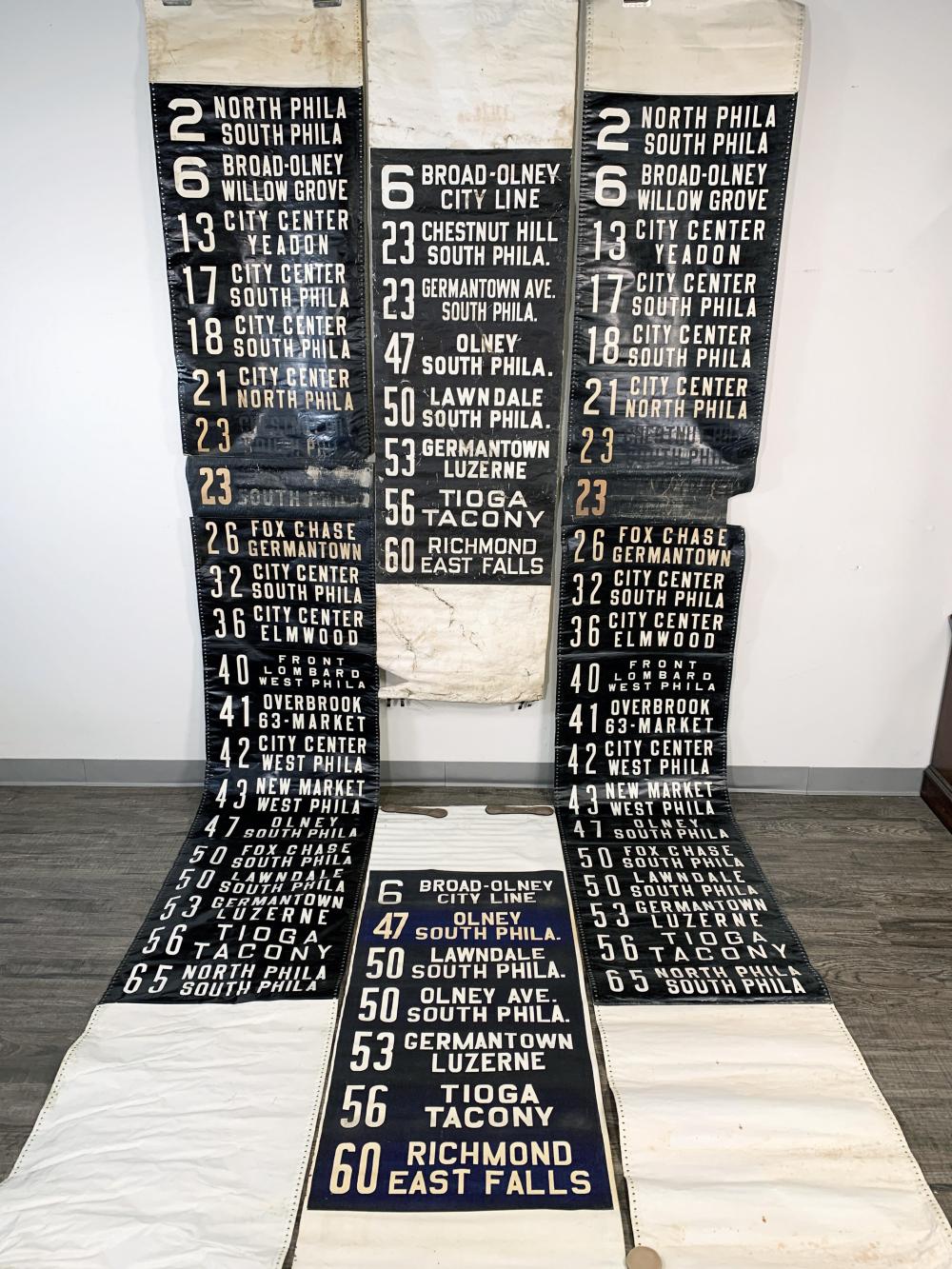
Back on Knorr Street, my mother is also seeking a sign, quietly asking the universe to tell me I need to get my ass back home. She supported my westward exploration, but she didn’t understand it. There were plenty of jobs in Philly, not to mention everyone I knew and loved. When I was eight, she moved us back to the city from the boardwalk vacation party town of Wildwood, New Jersey, in large part so we wouldn’t have to leave home to live our fullest lives.
When I call her later that week (there are no cell phones, no find my friend — I could be lying in a ditch for all she knew), I tell her about the Knorr Street SEPTA trolley.
“What do you think it means?” she asks.
“I guess the universe is looking out for me?”
“Yeah, that’s great, hon.”
When I tell her about the Liberty Bell two years later, she again bites her tongue.
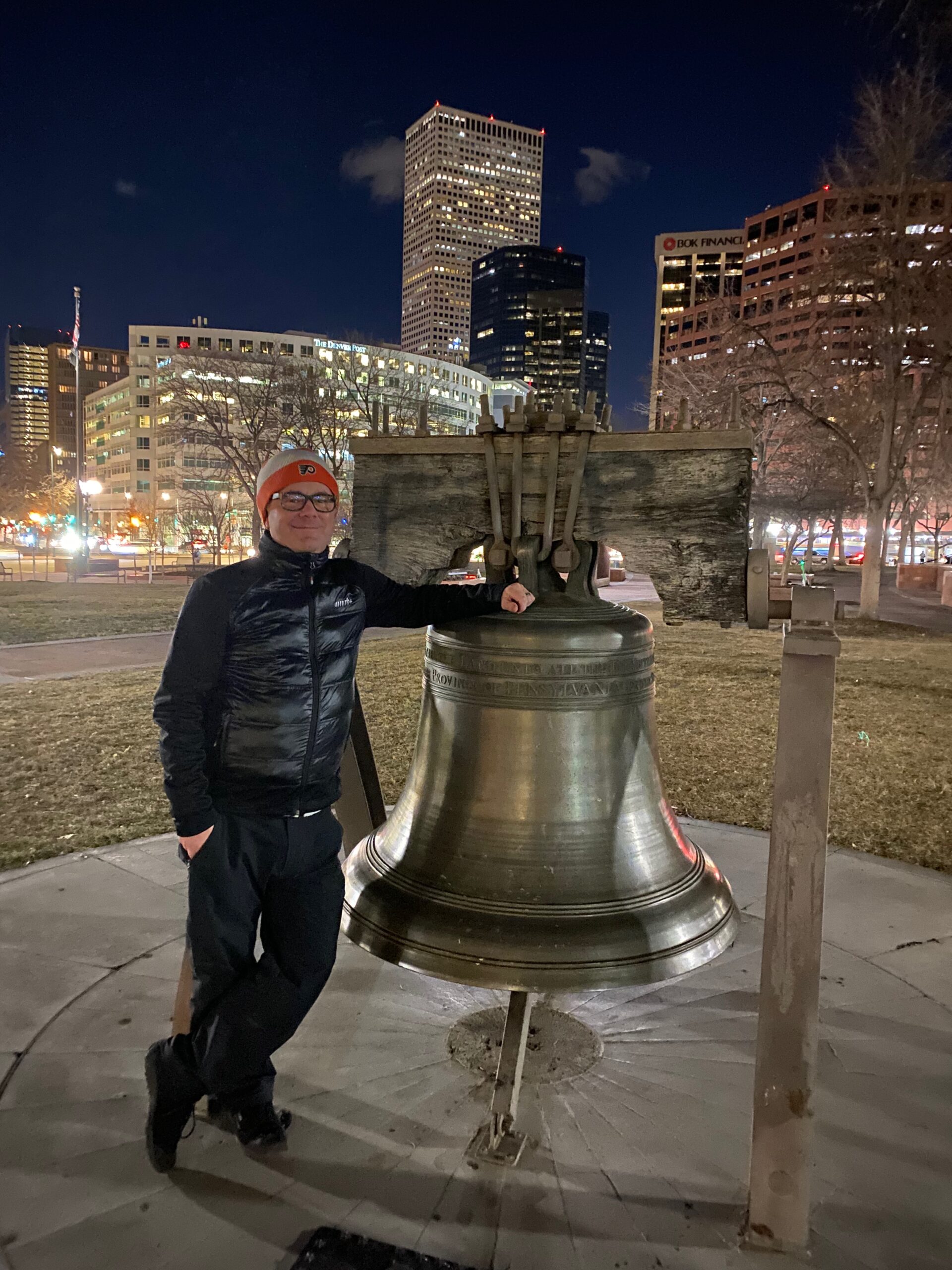
Colorado’s Liberty Bell replica tours the state for 50 days in the summer of 1950, traveling 2,400 miles on the back of a brand new flatbed Ford piloted by Warren C. Sullivan of Longmont, the 1949 state truck driver champion.
The bond drive is a well-oiled machine, with U.S. Treasury staff overseeing an army of volunteers. Sales goals are dialed in down to the county level, tallying up to a $650 million nationwide quota.
Under the campaign banner Save for Your Independence, Treasury press releases list when and where the replicas will appear, details of how they were produced and some fun facts about the real thing (henceforth referred to as the O.G. Liberty Bell). Papers from the L.A. Times to the Argus Farmer run the stories verbatim.
But not the Fort Collins Coloradoan. The article’s unnamed author speculates some citizens might call bullshit on the campaign.
“The government’s publicity corps may find its clever slogan, about buying bonds to provide for later financial independence, less clever than it thought. The reason for the bond campaign, of course, is to refinance a portion of the 256 billion dollar debt now coming due and to finance an additional deficit now in sight. Some of those who read the red-white-and-blue slogans doubtless wondered when the government is going to take its own advice about being ‘independent.’ ”
Burn.
Nevertheless, Colorado’s 1,318,048 residents show up, ring the bell and do their part to hit the state’s $5,980,000 quota.
When the bond drive ends on July 4, Governor Walter Walford Johnson officially accepts the Colorado Liberty Bell. A niche on the Capitol’s first floor displays it until 1974 when the bell moves under an outdoor masonry shrine at the southwest corner of East 14th Avenue and Sherman Street. In 1986 it moves to its current location in Lincoln Memorial Park.
In 1992, SEPTA converts the Torresdale Avenue trolley line to buses and retires its fleet of cars. In 1995, the Pikes Peak Trolley Museum and Restoration Shop buys several SEPTA trolley cars and places them throughout Colorado Springs to promote their efforts. You can ride a fully restored and repainted trolley at their test track on Steel Drive.
As the 2000s tick along, I hold down a few jobs, move to Fort Collins, meet my wife Dawn and start a design agency with her.
Decades of wind and snow and mile-high sun take their toll on Colorado’s Liberty Bell. In 2013, the Mount Rosa chapter of the Daughters of the American Revolution spearheads a $50,000 restoration effort. The original dedication plaque I read in 1997 had been stolen and likely sold for scrap, the yoke was deteriorating, and the bearing system neared the point of failure.
As Colorado’s population doubles between 1950 and 1990 and nearly doubles again over the next three decades, Denver and other front range cities feel the accompanying growing pains. DIA (now DEN) is the third busiest airport in the country and the sixth busiest in the world.
Lincoln Memorial Park gradually becomes an encampment for people experiencing homelessness. In January 2020, the city closes the park, citing a rat infestation. The advocacy group Denver Homelessness Out Loud calls it a sweep intended to forcibly remove urban campers. The park reopens two months later with the Liberty Bell once again its only permanent resident.
If you’re looking for a sign, you can’t do much better than the Liberty Bell. Useless as a bell and unimpressive as an artifact, it’s only worth seeing if you see it as a sign — a holder of deeper meaning. You can visit the Statue of Liberty or the Eiffel Tower or Big Ben and enjoy them as beautiful things without appreciating their deeper symbolic meaning. The Liberty Bell, not so much.
There’s a billboard two blocks from our office. A servicemember’s hands present a folded American flag to a grieving widow beneath the headline: It’s more than a symbol. The campaign’s intention is on point: tap the wells of patriotism and empathy to reframe the American Legion as something more than a place to buy pull-tabs and cheap beer in a small town. The language, though, is backward. A flag isn’t more than a symbol. It’s more than a flag. It’s more because it’s a symbol. A flag tells you the cruise ship you’re boarding is registered in the Bahamas or that you’ve unceremoniously driven into Northern Ireland. We pledge allegiance to a symbol. A symbol is something you’d die for.
There’s nothing more useless than a cracked bell. There’s nothing more powerful than a symbol.
My quest to visit each state’s Liberty Bell has been fueled by curiosity, encouraged by my travel-loving wife and validated by the pure satisfaction of checking things off a list. But as I dove deeper down the rabbit hole, I found more bells and more stories of the people who love them — stories that begged to be told.
This is the story of 100 Liberty Bells — revered and relegated, imported and exported, lost and stolen, co-opted and commercialized, hyped up and blown up.
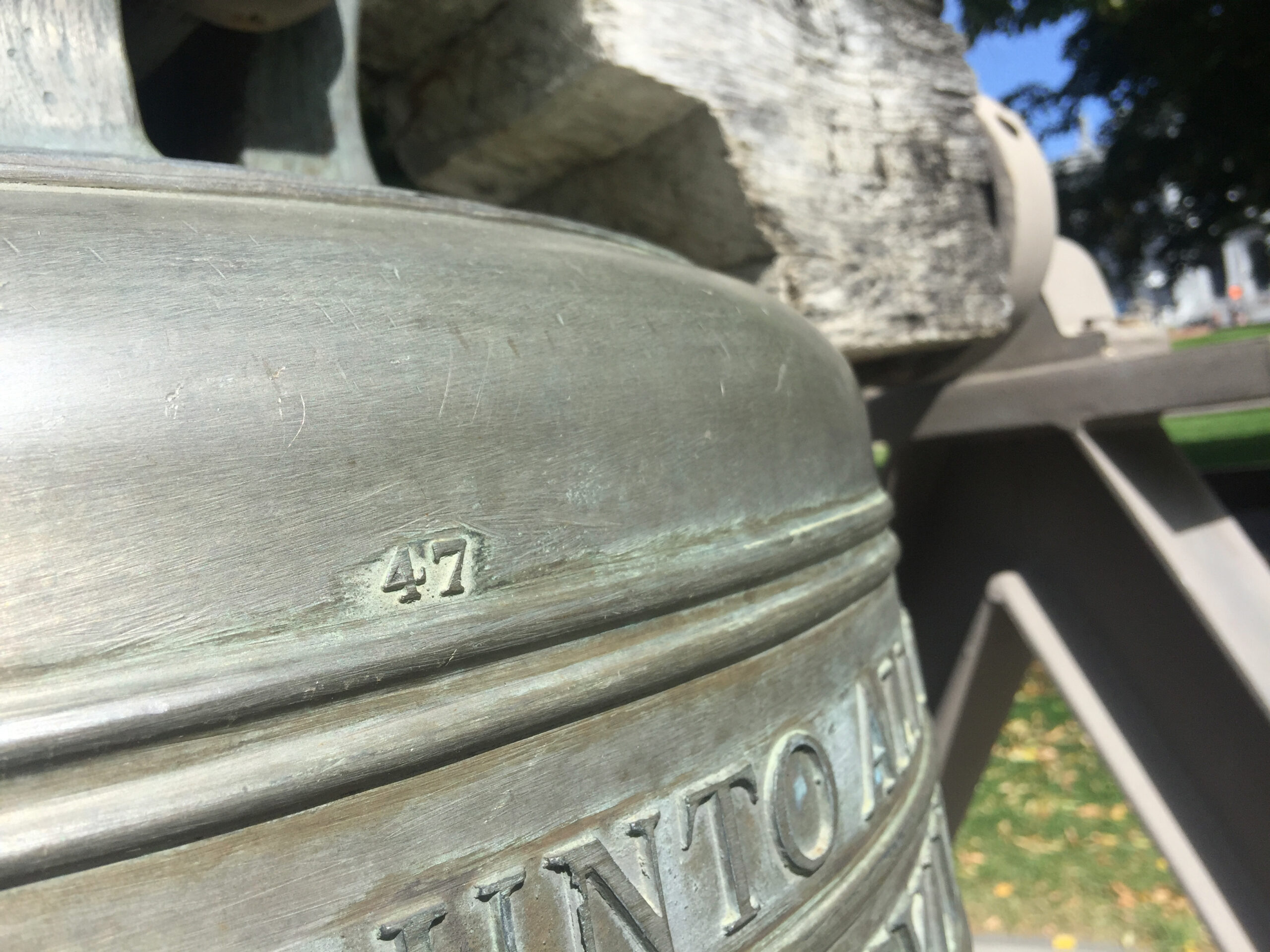
As for me, I’m grateful for the signs the universe plopped down in my path in those early years. My roots were firmly planted in Colorado before my mom and I really talked about how she felt and what her side of the conversation with the universe sounded like.
I am now the age she was then. She has now been gone for a decade. I now have family who live on the other side of the country. They know they can always move home. And we know they never will. I won’t ask the universe to send them a sign. Instead, we’ll take our grandson to see the Liberty Bell replica at the Capitol, 20 minutes from his house. It will be up to him to figure out what it means.

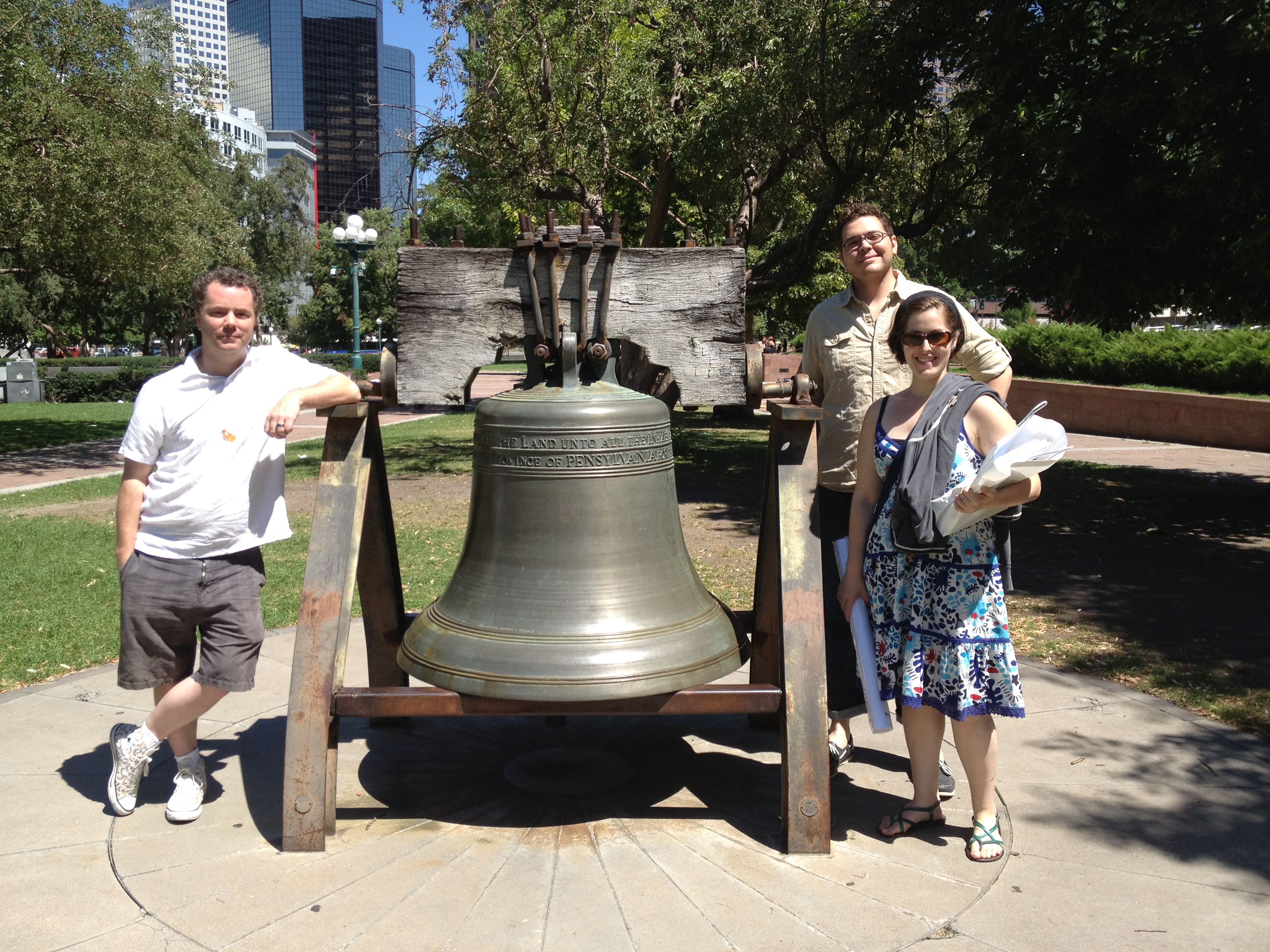 In Denver with Tanner and Jaime visiting from NYC — on July 23, 2012.
In Denver with Tanner and Jaime visiting from NYC — on July 23, 2012.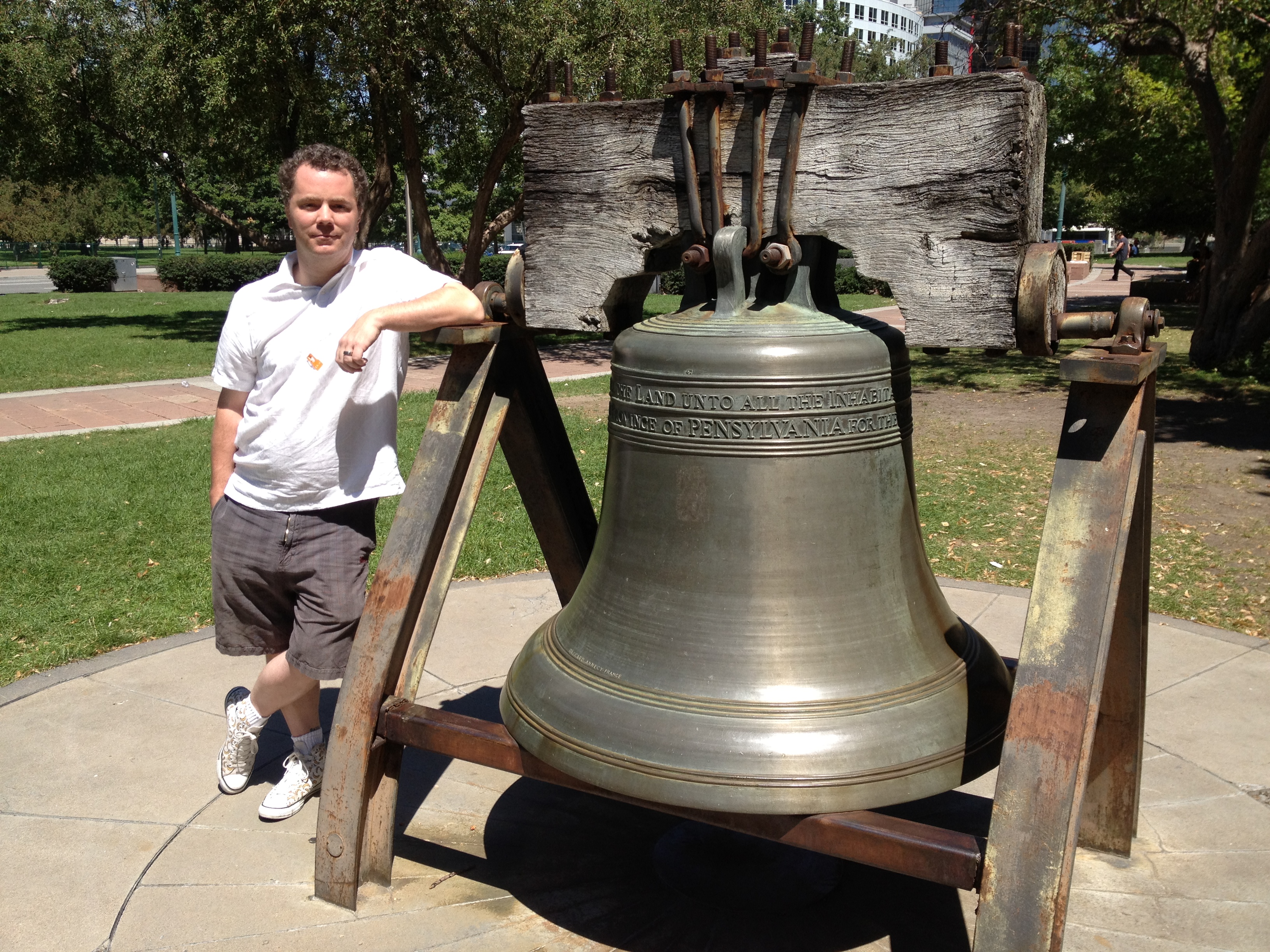
Colorado Liberty Bell replica
Location: Lincoln Memorial Park
1449 Lincoln Street
Denver, CO 80203
Serial Number: 47
Can I ring it? It’s in ringing condition, but the clapper is locked down.
Hours: 24/7 (outdoors)

Hey Tom! I would lien to buy a Liberty Bell for a children’s Patriot Camp I run each summer. In your travels, if you ever find a bell someone wants to sell, will you let me know? It’s $30,000 for a new half size replica and that’s out of our reach but maybe one of the mini bells you’ve posted about? That would work for us.
No pressure. Just is you happen to find one for sale.
Thanks!
Julie, I’ll send you an email with some thoughts.